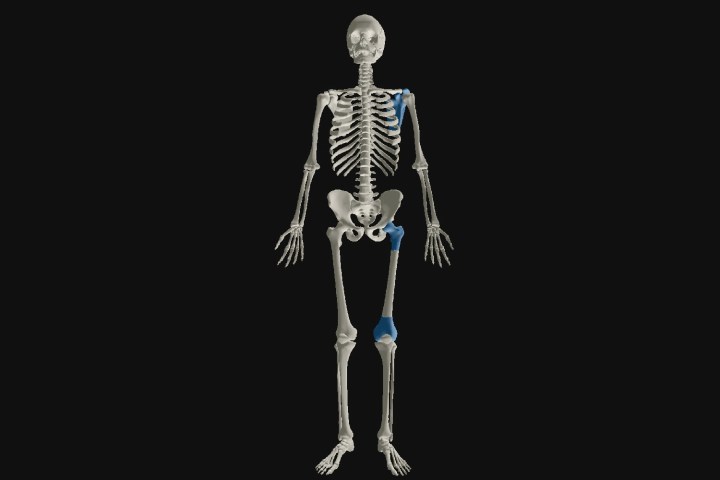
A recent project from the U.K.’s University of Oxford tries to bring that concept to life with an online 3D model showing how mankind has evolved over the years — and which even predicts how we might continue to do so in the future.
To put together this impressive model, the team analyzed 300 specimens spanning a period of 400 million years, with the goal of looking at how bones have changed.
“We went to the big collections at the Natural History Museum in London, the zoology department in Oxford, and the Smithsonian Institute in Washington and then [made] 3D CT reconstructions,” Dr. Paul Monk, who led the research, told Digital Trends. “That gave us a three-dimensional image of the bone, and then we were able to put them together in a mathematical morph; allowing you to start with present-day homo sapiens and slide back through evolution.”
As an expert in orthopedics, Monk said that his own interest in the project came from seeing patients come into his surgery with the same problems — such as shoulder and pains, as well as arthritis of the hip. He wanted to know how human skeletal structures had evolved in such a way that people were left with these problems.
Even if that is not your forte, though, the work is still fascinating — not least because it gives a glimpse at how the human body may continue to develop over the next 4,000 years by extrapolating past trends. However, Monk stresses that this is not an exact science, as it can’t take into account external forces.
“When we push the model forward, it’s important to be aware that there’s a bit of crystal ball gazing going on,” he said. “What we don’t know is what the evolutionary pressures will be in the future — such as a natural disaster that changes the course of evolution. We also don’t know about lifestyle or diet, which really can’t be predicted. But what the model shows is how we predict evolution will continue if we stay on the present course that we’re on.”
The 3D model is available for free open access online and you can check it out by clicking here.
“I’m a big believer in open-source material,” Monk said. “The concept of having this as pay-for-view or only available to a select few people is foreign to me. If people are interested, they should be able to see it.”


